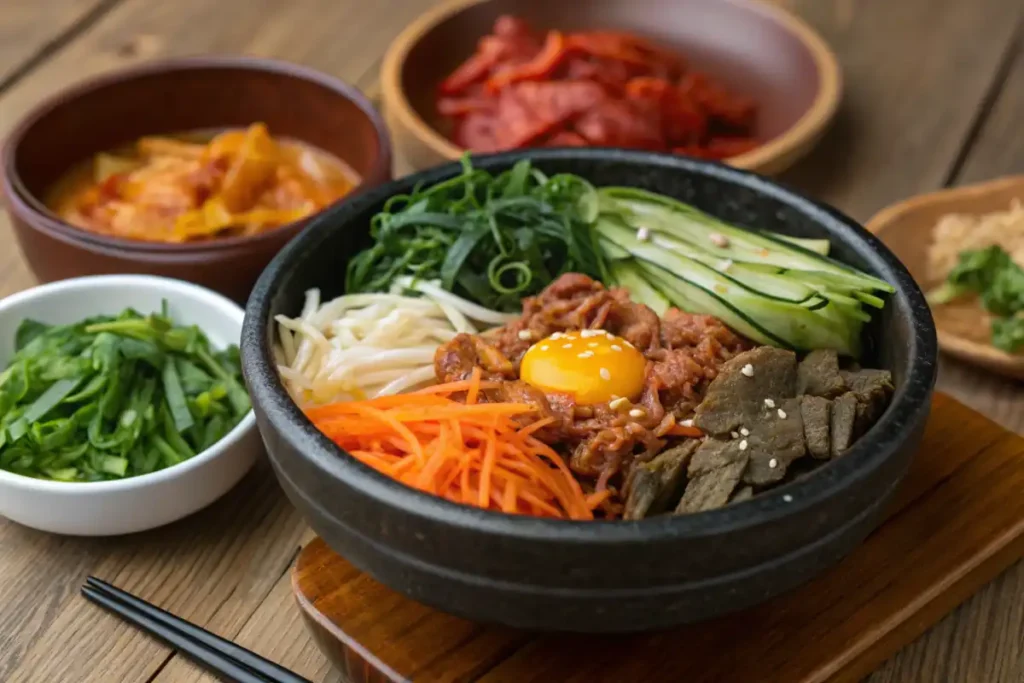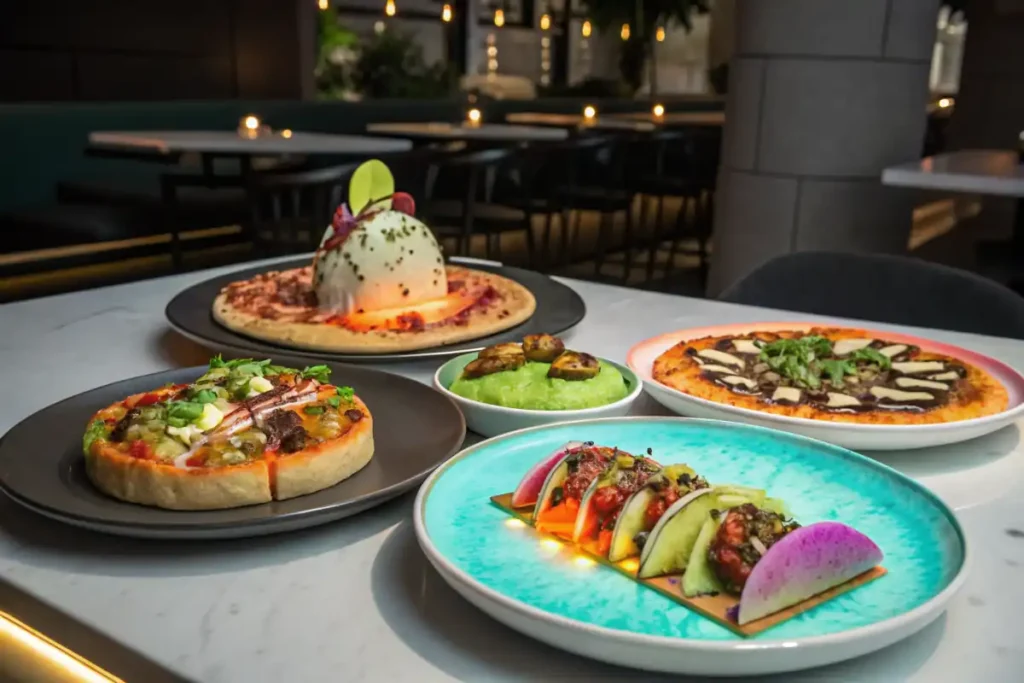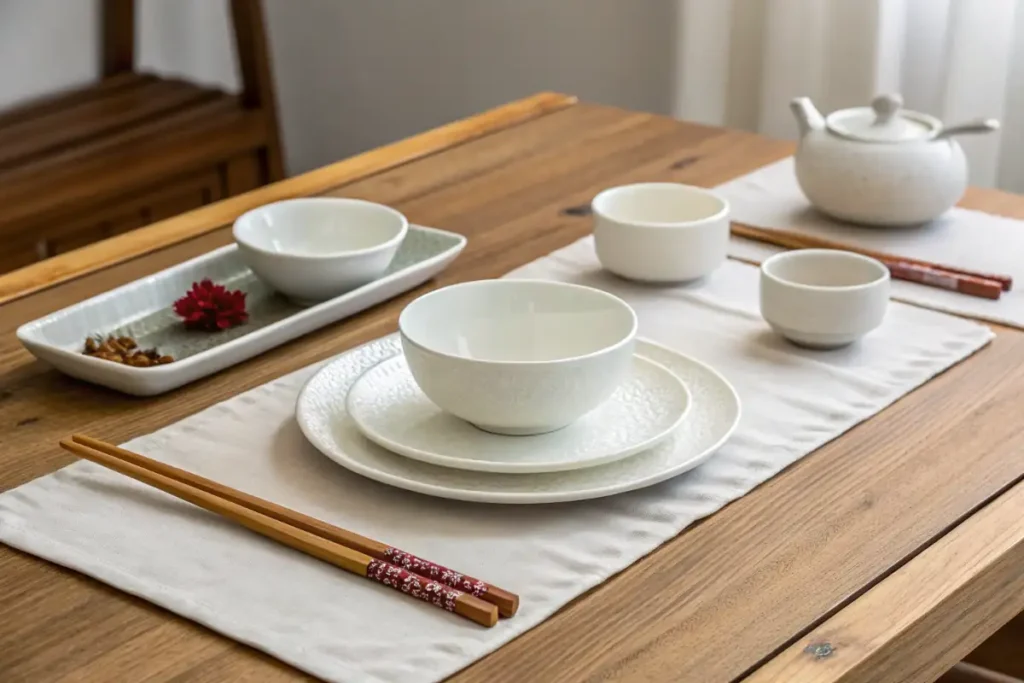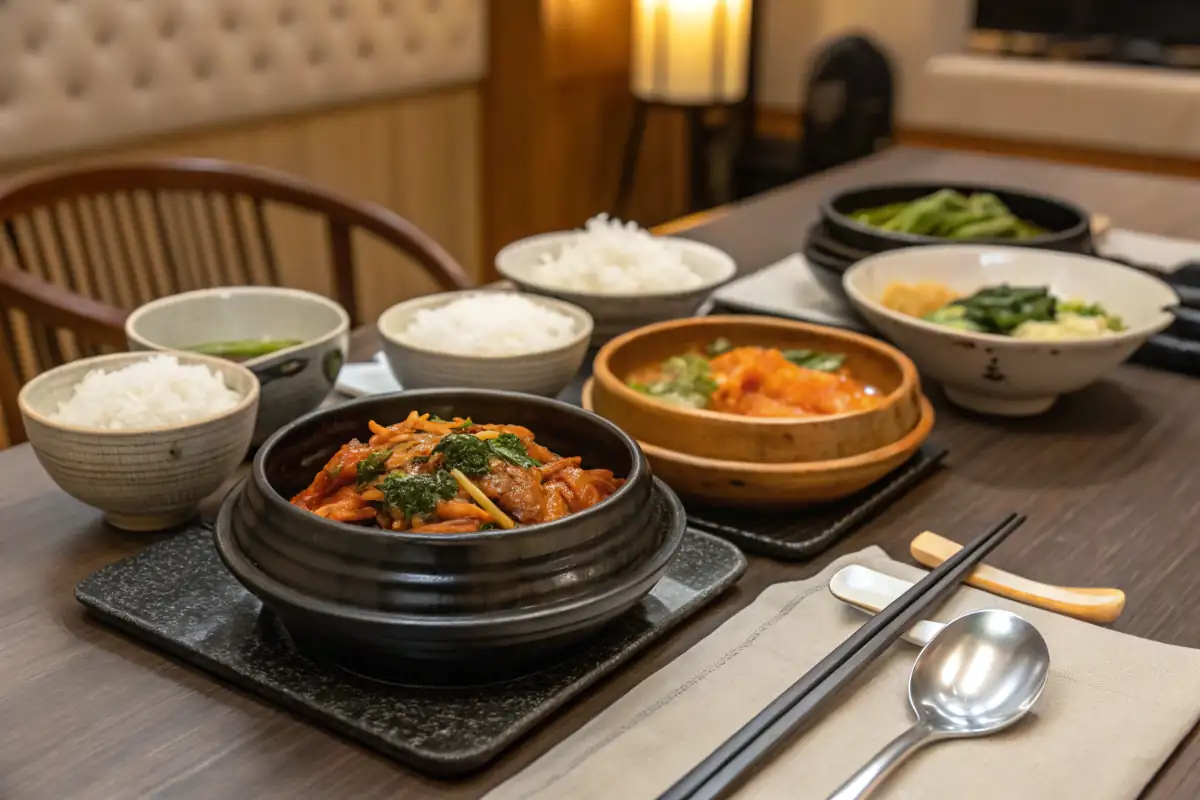Hosting Korean guests is an opportunity to share meaningful experiences through food. But if you’re wondering what to cook for Korean guests, it’s important to focus on dishes that not only honor their culture but also make them feel welcome. From traditional Korean meals like bibimbap and kimchi jjigae to creative fusion ideas, this guide will help you plan a menu that impresses and satisfies every palate. Let’s explore the essentials of creating a delicious and culturally respectful dining experience!
Understanding Korean Dining Culture
Key Aspects of Korean Dining Culture
When hosting Korean guests, understanding their dining culture is as important as the dishes themselves. Korean meals are typically shared, with an emphasis on balance—not just in flavors but also in colors, textures, and temperatures. Everything on the table works together to create harmony, making the experience both delicious and meaningful.
Meals often include a variety of small side dishes (banchan), which are placed in the center for everyone to enjoy. For example, vibrant kimchi or subtly seasoned spinach salad might accompany a hearty stew. This communal style fosters connection, ensuring that food becomes a bridge for conversation and camaraderie.
Common Dining Etiquette for Korean Guests
Hosting Korean guests requires more than just good food; it’s also about respect and etiquette. Here are some cultural tips to keep in mind:
- Respect Elders: Always serve older guests first, as age is deeply respected in Korean culture.
- Avoid Waste: Koreans value not wasting food; serving manageable portions and eating mindfully shows thoughtfulness.
- Chopsticks and Spoons: Unlike in some cultures, Korean meals involve the use of both chopsticks and a spoon, especially for rice and soups. Place them neatly side by side for your guests’ convenience.
By understanding these nuances, you’ll set a welcoming tone and show your guests that their traditions matter to you.
Traditional Korean Dishes to Consider

Popular Traditional Dishes That Impress Korean Guests
When deciding what to cook for Korean guests, it’s hard to go wrong with authentic Korean dishes. These meals are packed with rich flavors and showcase the heart of Korean culinary traditions. By offering an array of main dishes, soups, and side dishes (banchan), you’ll create an experience that feels both familiar and delightful to your guests.
Main Dishes
Bulgogi: This savory-sweet grilled beef dish is a crowd-pleaser. Made with thinly sliced beef marinated in soy sauce, garlic, and sesame oil, it offers a tender texture and a flavor-packed bite. Serve it alongside rice to complete the meal.
Samgyetang: A light chicken soup made with ginseng, sticky rice, and jujube. This hearty yet mild dish is perfect for guests seeking a comforting and healthful option.
Stews and Soups
Kimchi Jjigae: Nothing screams traditional Korean comfort food more than this spicy kimchi stew. Packed with flavor, it’s made by simmering aged kimchi with tofu, vegetables, and a savory broth. Its punchy, tangy taste pairs wonderfully with steamed rice.
Doenjang Jjigae: A staple soybean paste stew that’s earthy, umami-rich, and filling. Add vegetables, tofu, and mushrooms for a well-rounded dish your guests will love.
Side Dishes (Banchan)
Side dishes—or banchan—are indispensable in any Korean meal. Here are some must-haves:
- Kimchi: Fermented cabbage or radish, offering spicy and tangy flavors.
- Japchae: Stir-fried glass noodles with a hint of sesame, mixed with colorful vegetables.
- Gyeran Mari: Rolled egg omelets that are savory, fluffy, and easy to prepare.
Rice and Noodles
Bibimbap: A quintessential Korean dish, Bibimbap is a bowl of rice topped with vegetables, a fried egg, and a dollop of gochujang (red chili paste). It’s visually stunning and perfect for a casual gathering.
Naengmyeon: Cold buckwheat noodles served in a chilled broth. This refreshing dish is an unexpected yet welcome addition to your menu, especially in warmer weather.
Desserts and Snacks
Hotteok: Sweet Korean pancakes stuffed with brown sugar and cinnamon, perfect for an after-meal treat.
Yakgwa: Honey-soaked pastries that are chewy, sweet, and rich, offering a delightful end to any meal.
Fusion Options for Korean Guests

Creative Dishes Combining Korean and Local Flavors
If you want to wow your Korean guests with something unique, consider offering fusion dishes. These combine the essence of Korean cuisine with local or global culinary influences, creating a fresh take on traditional flavors. Fusion meals also provide variety and cater to a broader range of palates, making them perfect for mixed gatherings.
Fusion Appetizers
Kimchi Tacos: A spicy, zesty twist on a classic Mexican favorite. Top tortillas with spicy kimchi, grilled chicken, or tofu, and garnish with sesame seeds and cilantro. The combination of tangy kimchi and savory fillings adds a bold flavor.
Korean-Style Sliders: Mini burgers featuring grilled beef or chicken marinated in bulgogi-style seasoning. Add kimchi slaw for a crunchy, spicy kick.
Gochujang Hummus with Veggie Sticks: Blend traditional hummus with a spoonful of Korean chili paste (gochujang) for a spicy dip. It’s a creative way to merge Middle Eastern and Korean flavors.
Fusion Main Courses
Korean BBQ Pizza: Top a pizza crust with bulgogi-marinated beef, sautéed vegetables, and shredded mozzarella. Add a drizzle of sesame oil or gochujang sauce for an unforgettable Korean-Italian hybrid.
Kimchi Fried Rice with a Western Twist: Enhance the classic kimchi bokkeumbap by adding shredded cheese, diced ham, or vegetables like bell peppers. It’s comforting, cheesy, and still carries the boldness of Korean flavors.
Bibimbap Bowls with a Local Twist: Adapt bibimbap by adding locally inspired toppings—think avocado slices, roasted sweet potatoes, or grilled salmon.
Dessert Ideas
Matcha and Red Bean Mochi Ice Cream: While mochi is more Japanese, the flavors of matcha and red bean resonate well in Korean cuisine. Pair it with a drizzle of honey for extra sweetness.
Honey Butter Pancakes: Pancakes infused with a sweet, buttery glaze inspired by Korean honey butter chips. Serve them with whipped cream or fresh fruit for a decadent dessert.
Why Fusion Works
Fusion dishes demonstrate creativity and effort, which can deeply impress your guests. They also offer a comfortable starting point for those less familiar with Korean cuisine. However, it’s important to strike a balance between honoring traditional flavors and adding new twists—ensuring your dishes remain authentic yet inventive.
Planning the Meal

How to Create a Balanced Korean Meal for Guests
Planning what to cook for Korean guests isn’t just about choosing the dishes—it’s about creating balance. Korean meals are designed to harmonize flavors, textures, and temperatures. A well-planned spread will not only be visually appealing but also deliver a satisfying dining experience.
Start by selecting a mix of dishes that represent sweet, salty, spicy, and umami flavors. For instance, pairing savory bulgogi with tangy kimchi jjigae and mild steamed rice creates a balanced flavor profile. Include fresh vegetables, proteins, and grains to make the meal wholesome.
Portion sizes also matter. Ensure that each guest has an adequate serving of rice or noodles, a protein-rich main dish, and several banchan options. Typically, 3–5 side dishes are ideal for a Korean-style meal, but you can adjust based on the number of guests.
Suggestions for Table Layout and Presentation
Presentation is an integral part of a Korean meal. Traditionally, dishes are served family-style, with everything placed in the center for guests to share. Here are some tips to arrange your table beautifully:
- Group Dishes by Type: Place the main dish at the center and surround it with bowls of side dishes (banchan), rice, and soups.
- Use Porcelain or Ceramic Bowls: This adds an authentic touch while making the colors of the food stand out.
- Pay Attention to Color: Korean meals are as much about appearance as flavor. Include vibrant dishes like kimchi and japchae to create visual appeal.
Pairing Drinks with Korean Meals
Drinks can complement the meal and enhance the dining experience. While water is a classic choice, non-alcoholic Korean drinks like barley tea or rice punch are excellent options. These are light, refreshing, and often served with traditional meals.
By planning your meal with care and attention to detail, you’ll show your guests how much thought you’ve put into creating a meaningful and delicious experience.
Ingredients to Stock for Cooking Korean Food
Essential Ingredients for Korean Dishes
Cooking authentic Korean dishes requires specific ingredients that define the flavors of this cuisine. Stocking these staples will make it easier to create a variety of traditional and fusion dishes your Korean guests will appreciate.
- Gochujang (Red Chili Paste): This thick, sweet, and spicy paste is a cornerstone of Korean cuisine, used in everything from bibimbap to marinades.
- Doenjang (Soybean Paste): A fermented ingredient with a bold, earthy flavor, ideal for stews like doenjang jjigae.
- Korean Soy Sauce: Slightly sweeter than regular soy sauce, it enhances the umami flavors in soups, marinades, and stir-fries.
- Sesame Oil: A rich, nutty oil that adds depth to dishes like japchae or dipping sauces.
- Korean Red Chili Flakes (Gochugaru): Essential for making kimchi and spicy stews.
Fresh Ingredients
In addition to pantry staples, fresh ingredients play a critical role in Korean cooking. The following items are frequently used in recipes:
- Napa Cabbage and Korean Radish: Key for making kimchi and other side dishes.
- Green Onions: Often used as a garnish or seasoning.
- Garlic and Ginger: Common aromatics in most marinades, stews, and stir-fries.
- Tofu: Adds protein and texture to stews and side dishes.
- Short-Grain Rice: Sticky and slightly sweet, this rice is a must-have for any Korean meal.
Where to Source Korean Ingredients
Finding these ingredients is easier than ever, thanks to the growing popularity of Korean cuisine. Here are some tips:
- Local Asian Grocery Stores: Look for Korean specialty sections stocked with fresh and packaged goods.
- Online Marketplaces: Websites like Korean Bapsang or Maangchi offer authentic ingredients with delivery options.
- Substitutions: If you can’t find certain ingredients, you can use alternatives like miso paste for doenjang or crushed red pepper for gochugaru.
By keeping these ingredients on hand, you’ll be well-equipped to prepare a variety of dishes, whether you’re recreating traditional recipes or experimenting with fusion options.
Frequently Asked Questions on What to Cook for Korean Guests
When preparing what to cook for Korean guests, many questions may arise about etiquette, preferences, and how to ensure a pleasant experience. Here are answers to some commonly asked questions to help you host with confidence:
Can I serve non-traditional dishes to Korean guests?
Absolutely! While many Korean guests will appreciate authentic dishes, they’re also likely to enjoy creative fusion dishes that blend local flavors with Korean ingredients. For example, kimchi quesadillas or bulgogi sliders can be fun and delicious. Just ensure the flavors remain balanced and avoid overpowering the dishes with overly spicy or unfamiliar tastes unless your guests love spice.
How many side dishes should I prepare?
Typically, a Korean meal includes 3–5 banchan (side dishes). You don’t need to overwhelm yourself by preparing too many. Classics like kimchi, stir-fried vegetables, and marinated tofu are simple yet flavorful options that complement most main dishes.
What should I do if I cannot source specific ingredients?
If you’re missing certain ingredients, you can use substitutions. For instance, miso paste works as a substitute for doenjang (soybean paste), and crushed red pepper can replace gochugaru (Korean chili flakes). However, sourcing authentic ingredients when possible will enhance the overall flavor and experience.
Are desserts mandatory in Korean meals?
Desserts are not a significant part of traditional Korean meals, but they are a welcome addition. Simple options like fresh fruit, hotteok (sweet pancakes), or yakgwa (honey pastries) can round out the meal beautifully.
How can I accommodate vegetarians or those with dietary restrictions?
There are plenty of vegetarian-friendly Korean dishes. Offer vegetable-based bibimbap, japchae made with tofu, or doenjang jjigae without meat. Be sure to ask your guests about any dietary restrictions in advance so you can tailor the menu accordingly.
Do I need to use chopsticks when serving Korean guests?
Providing chopsticks is traditional and thoughtful, but also include spoons for rice and soups. Korean culture appreciates practicality, so offering both is a polite gesture.
Conclusion and Final Hosting Tips
Preparing what to cook for Korean guests doesn’t have to feel overwhelming. By understanding the cultural nuances of Korean dining, selecting dishes that balance flavor and variety, and planning a thoughtful meal, you can create an unforgettable experience for your guests.
Final Hosting Tips to Impress Korean Guests
- Focus on Presentation: A beautifully arranged table with vibrant dishes shows effort and thoughtfulness. Use traditional bowls or plates, and serve everything family-style to reflect Korean dining customs.
- Balance the Menu: Offer a mix of spicy, savory, and mild dishes to cater to everyone’s palate. Ensure there are vegetarian options if needed and include classics like kimchi and bibimbap for a familiar touch.
- Add a Personal Touch: While traditional dishes are important, incorporating fusion options or adding a creative twist to familiar flavors can show your guests that you’ve gone the extra mile.
- Consider Drinks and Desserts: Finish the meal with a refreshing non-alcoholic Korean drink like barley tea and simple yet delightful desserts such as hotteok.
The Heart of Korean Hospitality
Above all, Korean dining is about sharing, community, and connection. By creating a warm, welcoming environment and showing an appreciation for their culture through food, you’re doing more than just hosting—you’re fostering a memorable experience for your guests.

